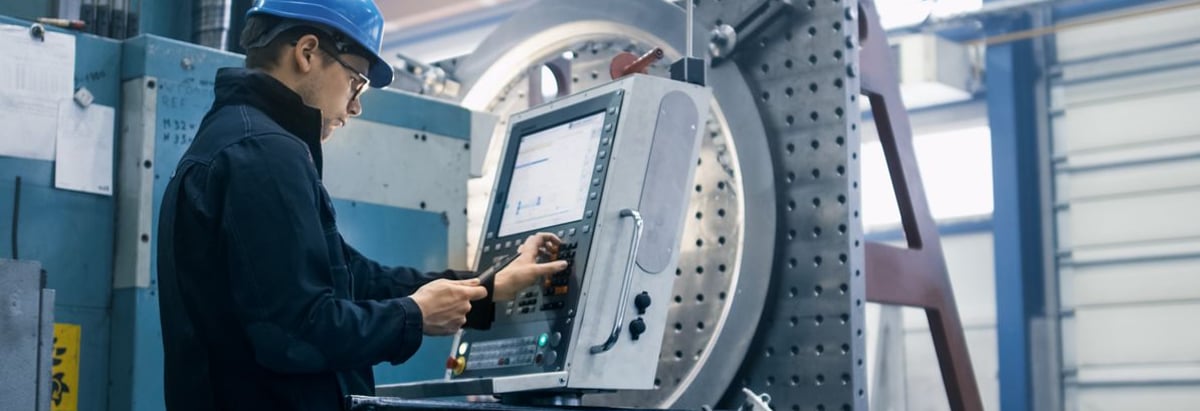Why We Like KONE Oyj’s (HEL:KNEBV) 31% Return On Capital Employed

Today we'll look at KONE Oyj (HEL:KNEBV) and reflect on its potential as an investment. In particular, we'll consider its Return On Capital Employed (ROCE), as that can give us insight into how profitably the company is able to employ capital in its business.
First of all, we'll work out how to calculate ROCE. Then we'll compare its ROCE to similar companies. Last but not least, we'll look at what impact its current liabilities have on its ROCE.
Return On Capital Employed (ROCE): What is it?
ROCE measures the amount of pre-tax profits a company can generate from the capital employed in its business. In general, businesses with a higher ROCE are usually better quality. Overall, it is a valuable metric that has its flaws. Renowned investment researcher Michael Mauboussin has suggested that a high ROCE can indicate that 'one dollar invested in the company generates value of more than one dollar'.
So, How Do We Calculate ROCE?
Analysts use this formula to calculate return on capital employed:
Return on Capital Employed = Earnings Before Interest and Tax (EBIT) ÷ (Total Assets - Current Liabilities)
Or for KONE Oyj:
0.31 = €1.2b ÷ (€8.6b - €4.6b) (Based on the trailing twelve months to December 2019.)
Therefore, KONE Oyj has an ROCE of 31%.
See our latest analysis for KONE Oyj
Is KONE Oyj's ROCE Good?
One way to assess ROCE is to compare similar companies. Using our data, we find that KONE Oyj's ROCE is meaningfully better than the 10% average in the Machinery industry. We would consider this a positive, as it suggests it is using capital more effectively than other similar companies. Putting aside its position relative to its industry for now, in absolute terms, KONE Oyj's ROCE is currently very good.
You can click on the image below to see (in greater detail) how KONE Oyj's past growth compares to other companies.

When considering ROCE, bear in mind that it reflects the past and does not necessarily predict the future. ROCE can be deceptive for cyclical businesses, as returns can look incredible in boom times, and terribly low in downturns. ROCE is, after all, simply a snap shot of a single year. What happens in the future is pretty important for investors, so we have prepared a free report on analyst forecasts for KONE Oyj.
How KONE Oyj's Current Liabilities Impact Its ROCE
Liabilities, such as supplier bills and bank overdrafts, are referred to as current liabilities if they need to be paid within 12 months. Due to the way ROCE is calculated, a high level of current liabilities makes a company look as though it has less capital employed, and thus can (sometimes unfairly) boost the ROCE. To check the impact of this, we calculate if a company has high current liabilities relative to its total assets.
KONE Oyj has current liabilities of €4.6b and total assets of €8.6b. As a result, its current liabilities are equal to approximately 54% of its total assets. KONE Oyj's high level of current liabilities boost the ROCE - but its ROCE is still impressive.
What We Can Learn From KONE Oyj's ROCE
So to us, the company is potentially worth investigating further. KONE Oyj looks strong on this analysis, but there are plenty of other companies that could be a good opportunity . Here is a free list of companies growing earnings rapidly.
For those who like to find winning investments this free list of growing companies with recent insider purchasing, could be just the ticket.
If you spot an error that warrants correction, please contact the editor at editorial-team@simplywallst.com. This article by Simply Wall St is general in nature. It does not constitute a recommendation to buy or sell any stock, and does not take account of your objectives, or your financial situation. Simply Wall St has no position in the stocks mentioned.
We aim to bring you long-term focused research analysis driven by fundamental data. Note that our analysis may not factor in the latest price-sensitive company announcements or qualitative material. Thank you for reading.
About HLSE:KNEBV
Proven track record with adequate balance sheet and pays a dividend.
Similar Companies
Market Insights
Community Narratives



